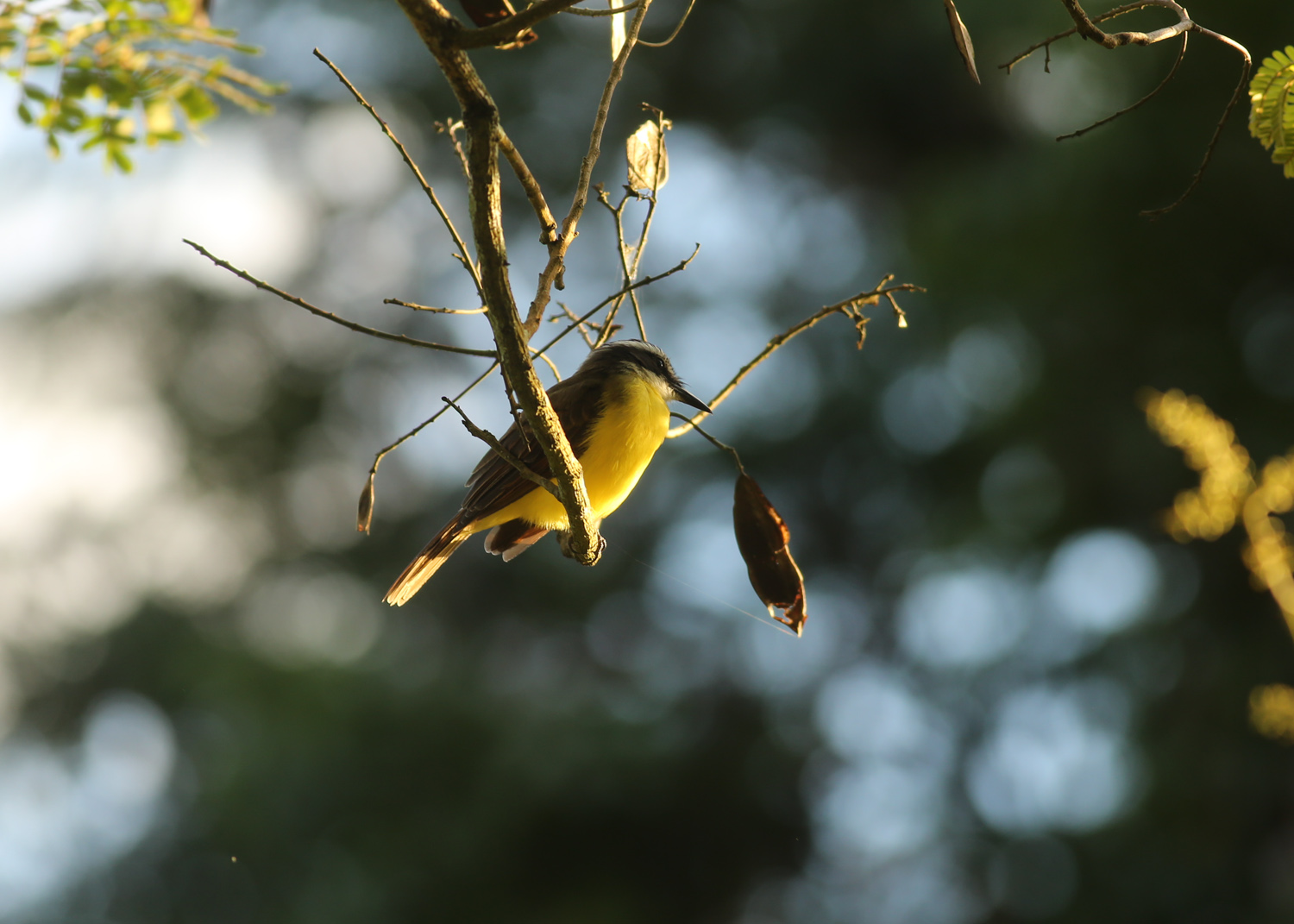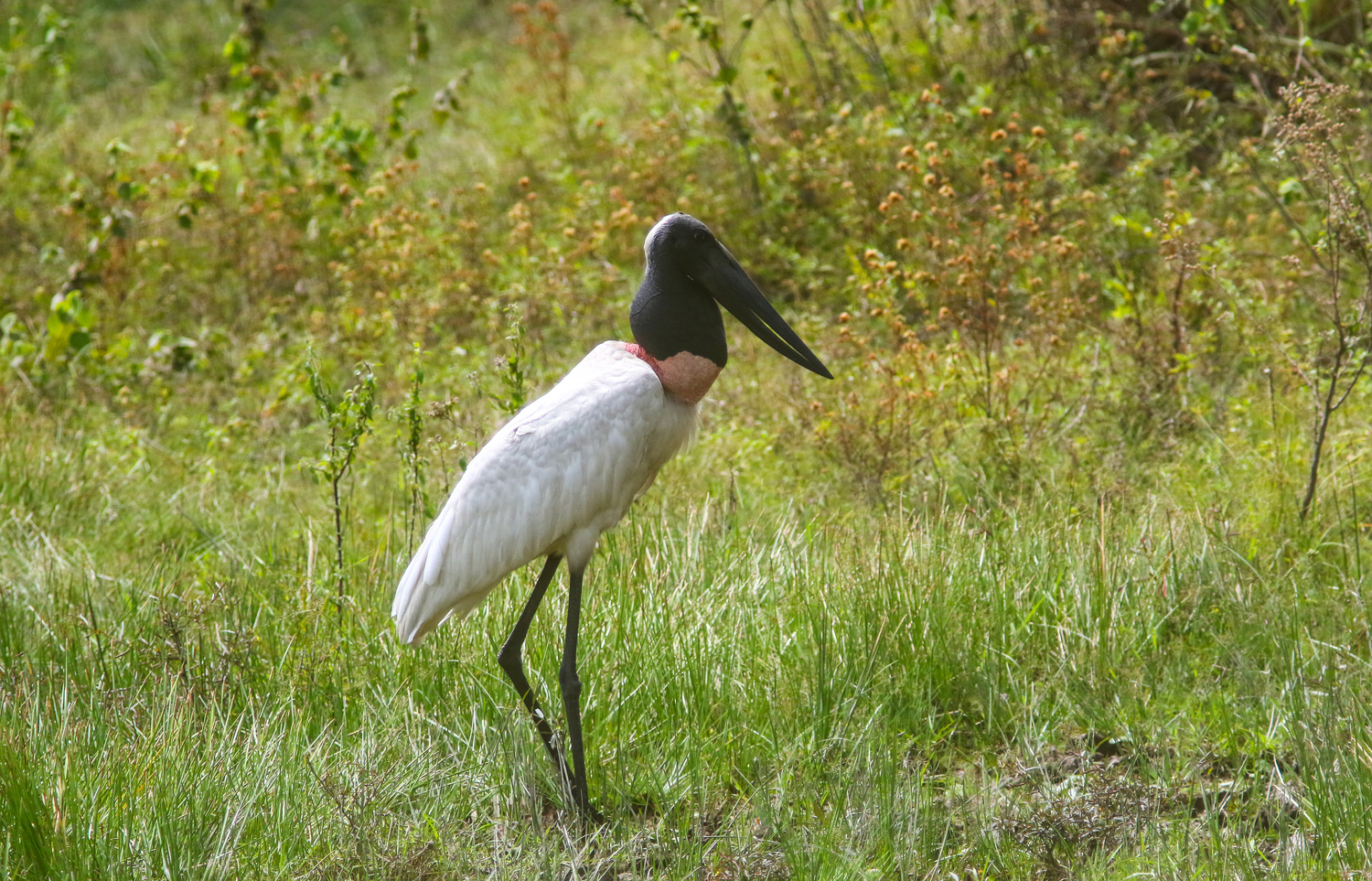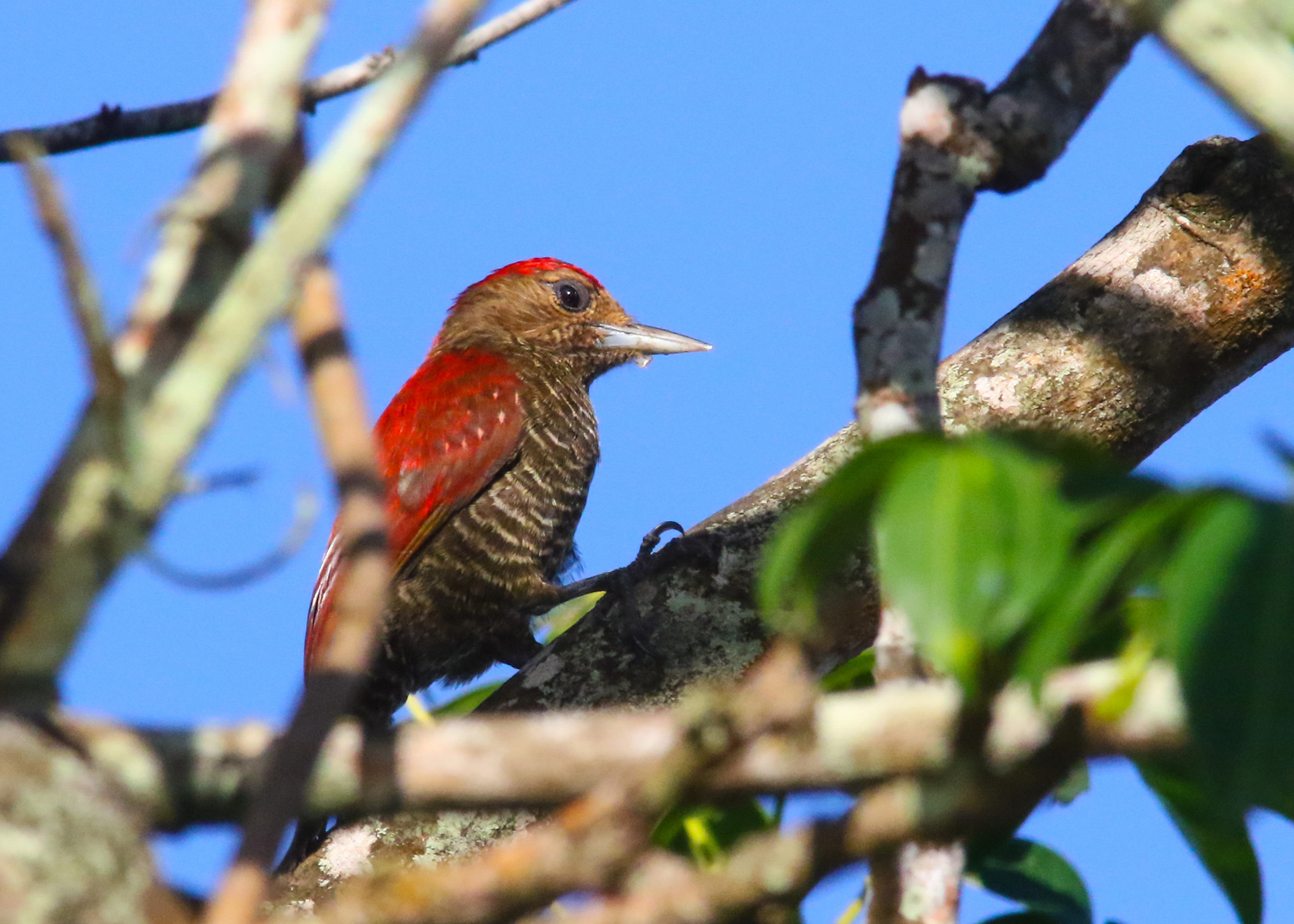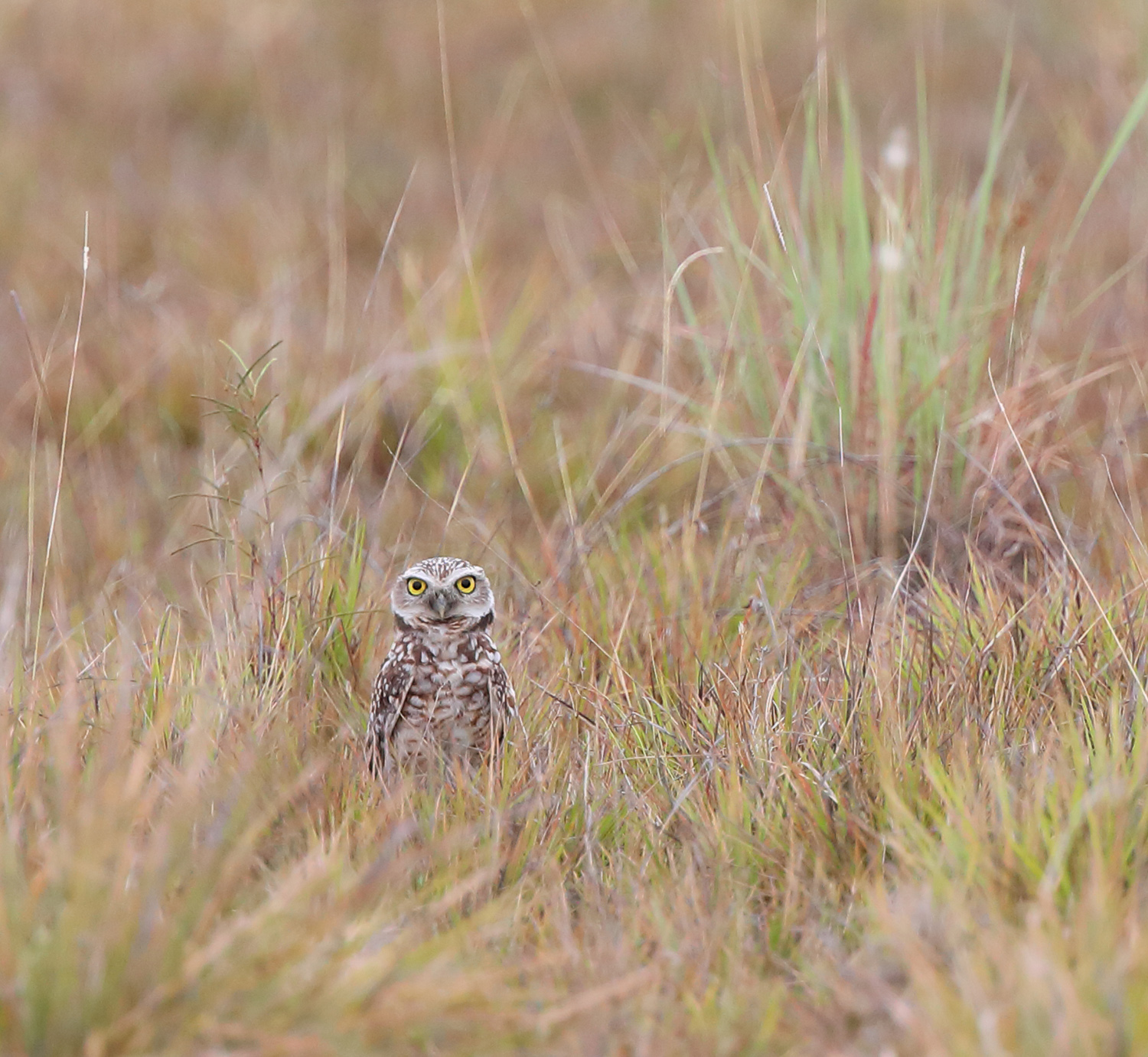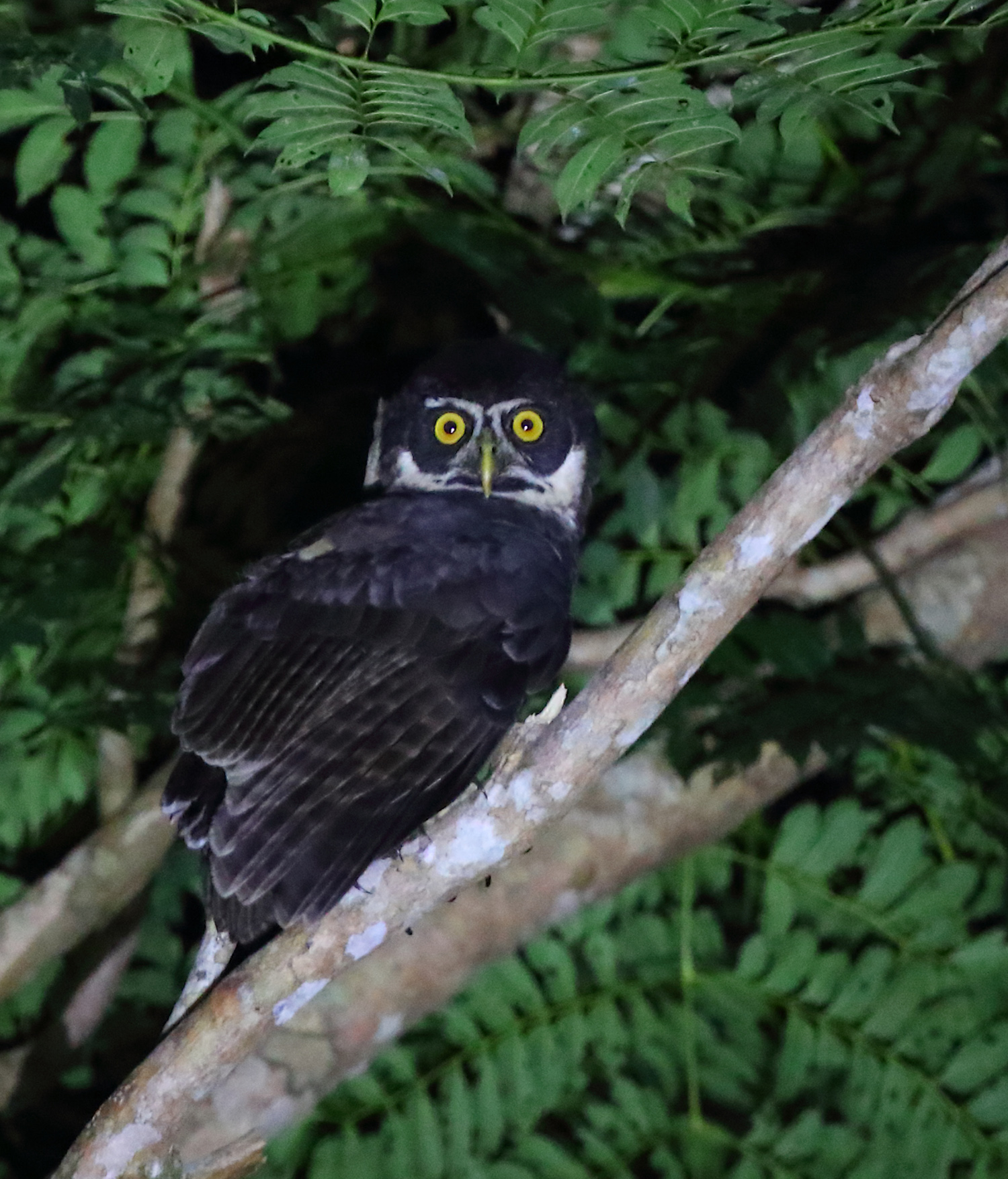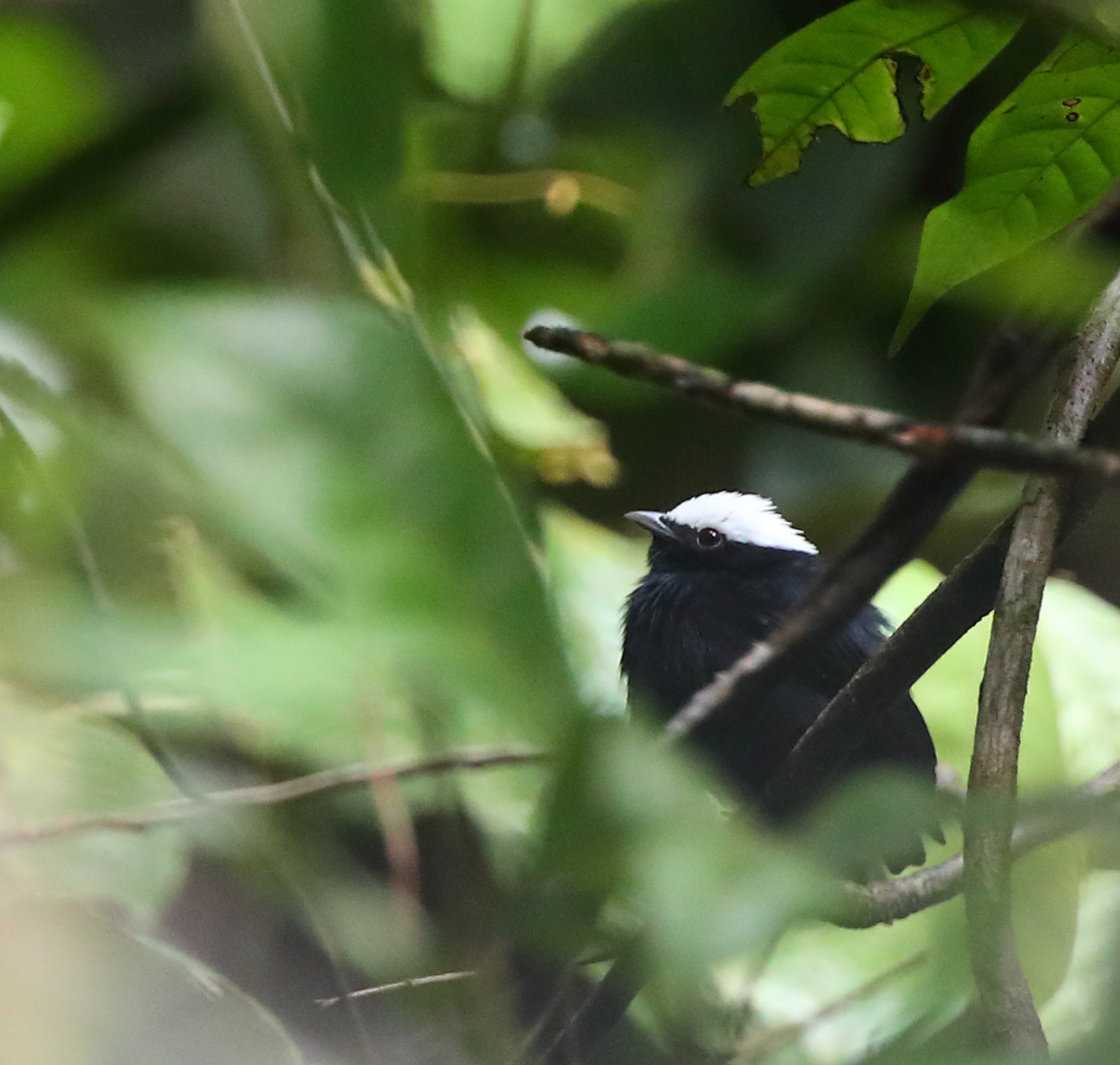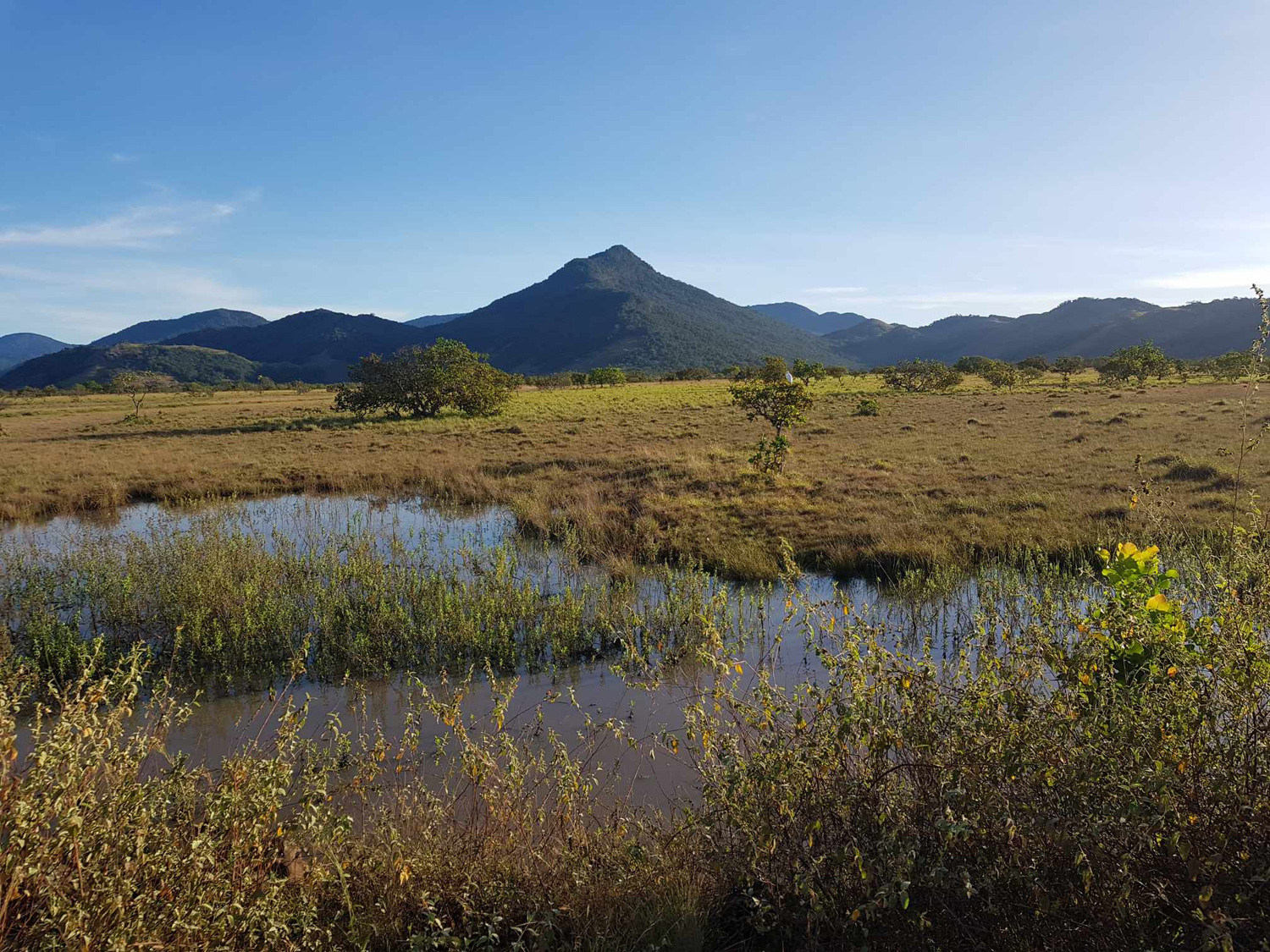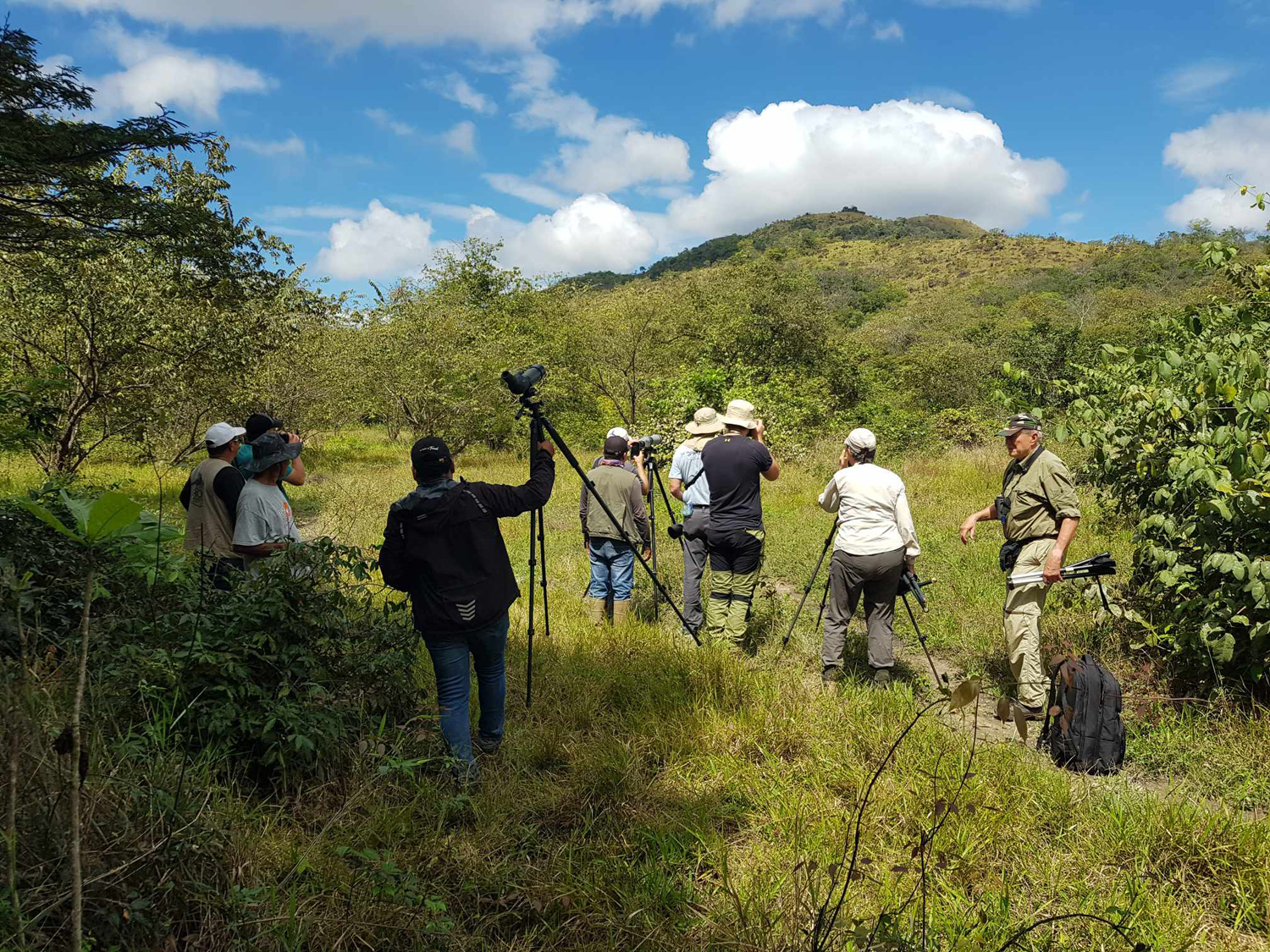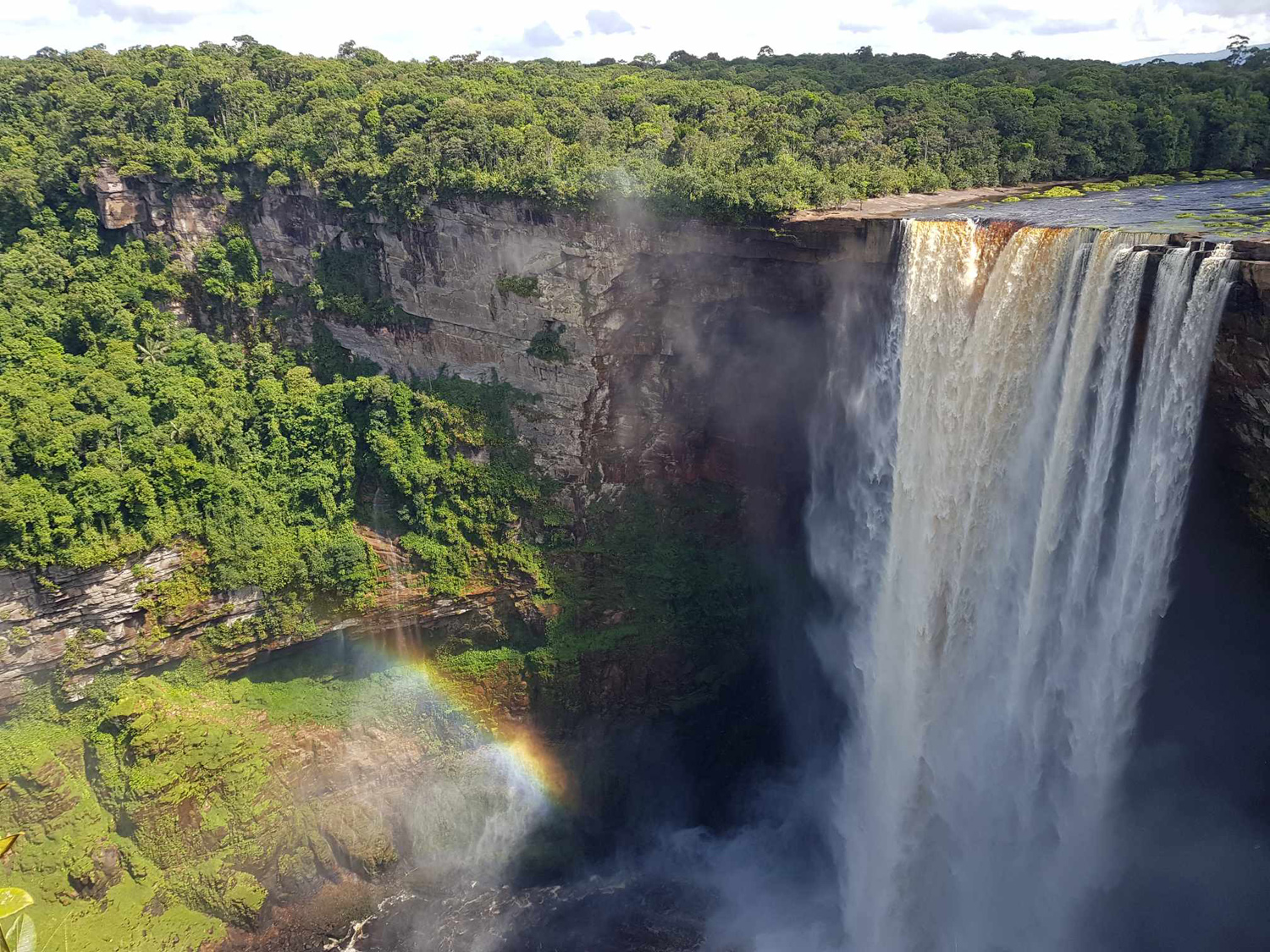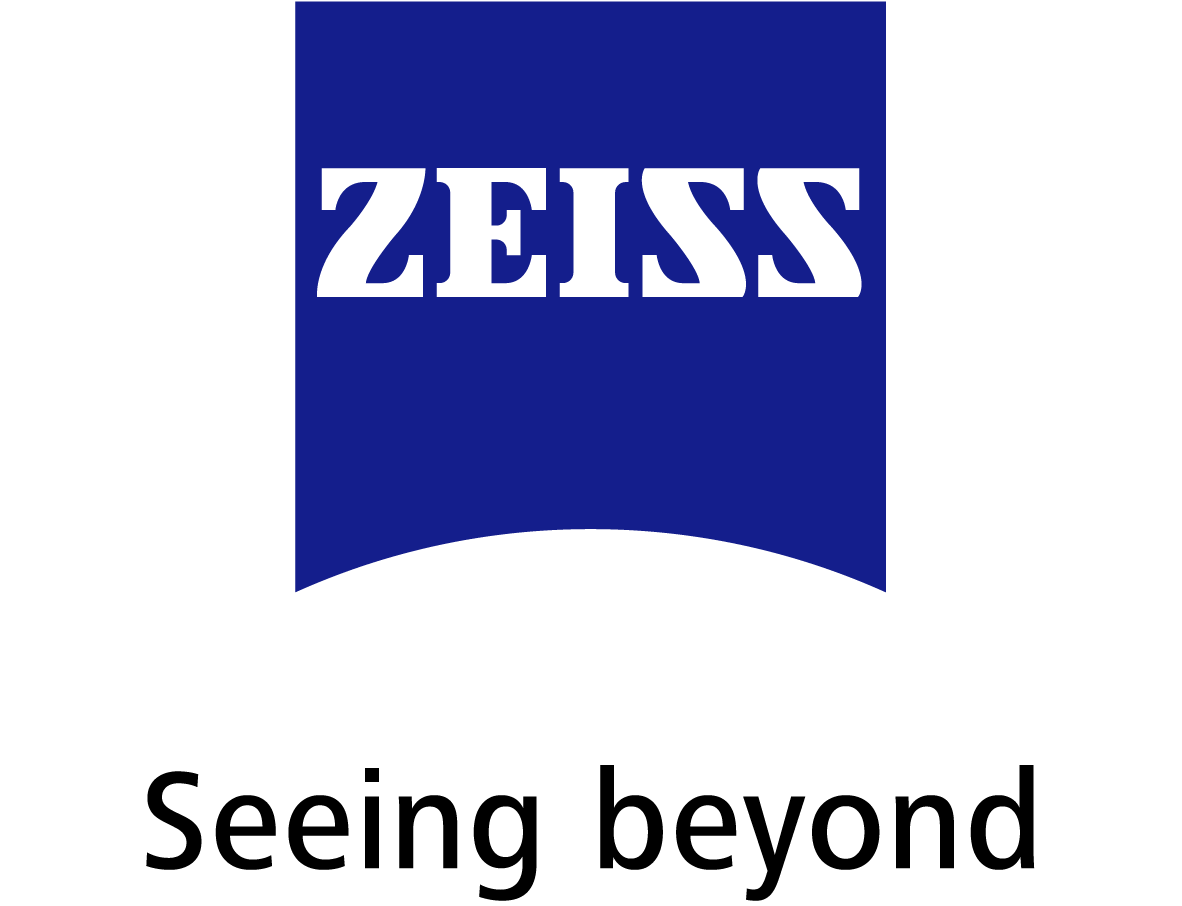Guyana
No date set, register your interest!
Guyana
No date set, register your interest!
No date set, register your interest!
Price: not available at the moment
Guianan Cock-of-the-Rock / Spotted Puffbird / Capuchinbird/ Pompadour Cotinga / Sun Parakeet / Red Siskin / Potooer
The unexplored South America
Guyana truly offers something special—a South American country with an Atlantic coastline and a variety of exciting and relatively unexplored environments. It’s a country that not many have traveled to, despite the fact that Swedish adventurer Jan Lindblad was here as early as the 1960s, wrestling with anacondas and filming cock-of-the-rock birds. The Guyanan Cock-of-the-rock is one of the country’s many emblematic birds, making Guyana a tempting destination along with the chance to see the Harpy Eagle and around 70 endemic bird species. We will take boat excursions on three rivers, visit the mighty Kaieteur Falls, and during our tour of the country, we will also meet the indigenous people. Our local operator is renowned for organizing the best birding trips in Guyana and employs some of the country’s best bird guides. We will stay in lodges that are owned and operated by the indigenous people.
If you want to see Guyana’s so-called ”Shield endemics,” such as the Guianan Cock-of-the-Rock, Spotted Puffbird, and the bizarre Capuchinbird, this is the trip for you. There is an impressive array of striking and rare birds, including Pompadour Cotinga with its unique wine-red coloring, Red and Black Grosbeak, Guianan Red Cotinga, Rufous-winged Ground-Cuckoo, Crimson Fruitcrow, Crested Doradito, Bearded Tachuri, White-naped Xenopsaris, Rio Branco Antbird, and Rose-breasted Chat, to name a few. We will make specific excursions to see particularly endangered species like the Sun Parakeet and the Red Siskin.
Potoos are a unique highlight in Guyana, where you have the chance to see all five species, with the most sought-after being Rufous Potoo, Long-tailed Potoo, and White-winged Potoo. Guyana is also home to numerous woodpeckers; Blood-colored Woodpecker and Cream-colored Woodpecker are two of the most special. Classic South American or Northern South American species that can also be seen in Guyana include the Scarlet Ibis, Hoatzin, Grey-winged Trumpeter, and, with some luck, Harpy Eagle.
There are many antbirds, with two of the most special being the White-plumed Antbird and Ferruginous-backed Antbird.
As a visitor in Guyana, you also have the chance to see the Giant Anteater and Anaconda.
This is a birdwatching trip for the adventurous. There are quite a few early mornings, and sometimes evening excursions are made at dusk. However, all of these are short and comfortable, conducted by vehicle and not on foot. Three domestic flights in small propeller planes are included, as well as at least three boat trips on three different rivers. Despite this, it is a comfortable journey with consistently good accommodations, food, and hospitality. Guyana is a warm country, and we travel during the dry season when it doesn’t rain much. Guyana is not ideal for photographers, as there are not many bird feeders or hides. However, Guyana offers many special birds and animals to see, and for those who have their camera ready, there are always photo opportunities, of course.
Guyana is a very flat country without any real mountain ranges. The northern part of the country is dominated by rainforest, with rock formations known as tepuis rising from the landscape, but only a few hundred meters at most. One of the most spectacular places in the country is Kaieteur National Park with its world-famous waterfall; the entire gorge is as impressive as the falls themselves. You have to fly by propeller plane to get here, and despite being the country’s largest single tourist attraction, we are often the only group here.
The southern part of the country is in sharp contrast, consisting of a drier, open landscape dominated by grass and shrubland. Much of it is grazing land, but there are also plenty of wetlands and a very rich birdlife. Deep in the Rupununi area, there is a unique, broken terrain with low mountains and sparse tree cover, home to the endangered Red Siskin and Sun Parakeet.
The only densely populated part of the country is the Atlantic coast, with the capital, Georgetown, which is also full of birds. The coast has shallow mudflats that can attract large numbers of shorebirds and other birds. River mouths and similar wetland environments offer specialties such as the Rufous Crab Hawk and the Blood-colored Woodpecker.
The infrastructure in Guyana is not very developed. There is basically only one road that connects the northern and southern parts of the country. To avoid wasting time on lengthy drives, we fly domestically from Georgetown to Kaieteur and then onward to Surama. Once in the southern part, we travel by bus and sometimes by 4-wheel drive jeeps. The trip covers the established bird lodges in the country, meaning we only cover a certain portion of it. There is undoubtedly much nature left to discover in eastern and western Guyana, for example, that we won’t have time to see on this trip. Nevertheless, the diversity is so considerable that you need 16 days to experience most of what this route offers.
We work with a local guide who leads us through the country for the entire trip. At most lodges, we also have additional guides who are experts on where to see the local birds. Guyana is known for having very dedicated and skilled bird guides.
The winter months are the best time to visit Guyana. Whether it’s before or after New Year can make a difference; we have traveled both in November and in January-February. It’s somewhat drier earlier in the year, which can concentrate waterfowl more and make anacondas and giant anteaters easier to spot. November sees more water in wetlands and lakes, as well as along the roads, with more flowering trees starting the nesting season for hummingbirds. The same goes for several other bird species. White Bellbirds call more in November-December than after New Year when they become quieter and harder to detect. Woodpeckers, however, don’t seem to start nesting until January and become easier to spot then, as do fruit-eating birds like Cotingas when more fruits ripen, which is more often towards the end of winter. That being said, the differences aren’t huge, and anytime during the winter months is well worth a visit, with a majority of target species visible.
The lodges range from luxurious bungalows to smaller, somewhat simpler lodges, but all are fantastically located with nature and birds just outside the window, and the food is always delicious. Beer is available at all lodges, while wine is typically only found in Georgetown. In Georgetown, we usually stay at the stylish Cara Lodge Hotel, which has a pleasant patio and restaurant. Typically, we stay here on the first and last nights of the trip. Wifi is now available at most lodges, possibly only in certain areas such as the reception or lounge.
When: No date set, register your interest!
Price: not available at the moment
Note: We reserve the right to increase the price if local costs or currency changes justify it. Minor adjustments to the start and end times of the trip may also be necessary at times.
We naturally offer to book the flight ticket for you. It’s important to us that we all travel on the same flight.
What’s included: Full board in double rooms at hotels, Swedish (English speaking) tour leader, local guide throughout the trip, all transportation, all necessary entrance fees to nature reserves and parks.
Not included: Airfare, transfer to the airport, insurance (Note! European Health Insurance Card is not valid here. Participants are required to have regular travel insurance covering accidents and illnesses.), alcohol, souvenirs, and other personal expenses, tips for local guide/driver.
Vaccination: Hepatitis A&B (Twinrix), tetanus, Yellow fever, bring malaria tablets.
Minimum number of participants: 6
Maximum number of participants: 12
Registration fee
When you have registered, we will send you an invoice for the registration fee, which is 20% of the total price of the trip. Once it is paid, you are guaranteed a place on the trip.
Day 1
Today is planned as an arrival day. Flights to Georgetown, Guyana. International flights usually arrive after dark at the recently renovated Cheddi Jagan International Airport, located 25 miles south of the capital city, Georgetown. You’ll be met at the airport by a representative from our team with a sign that has you name/s on it. You will be transferred directly to your comfortable hotel for the night.
Night at Cara Lodge Hotel. (No meals included)
Day 2 – – Mahaica River, Mudflats and Botanical Gardens
This morning we’ll leave our hotel at 5:00 AM (having downed a cup or two of caffeine to help us get started!) and head eastward along the Atlantic coast, making a few stops to check out the mud flats for Scarlet Ibises as they set out to feed at dawn. We will continue towards the community of Mahaica where we’ll take a boat trip along the river. Among our targets will be Guyana’s national bird, the bizarre, primitive Hoatzin, found in abundance on this river system. We’ll also look for a host of other species including Rufous Crab Hawk (localized), Black-collared Hawk, Black Hawk-Eagle, Long-winged Harrier, Barred Antshrike, Silvered Antbird, Striped, Mangrove and Little Cuckoos, Green-tailed Jacamar, Blood-colored Woodpecker and White-bellied Piculet. Depending on the level of the tide, we’ll check the shoreline for birds such as Scarlet Ibis, Mangrove Rail, White-cheeked Pintail, Western Sandpipers, Whimbrel, Black-bellied Plover, Short-billed Dowitcher, Tricolored Heron, Yellow-crowned Night-Heron, Little Blue Heron, Magnificent Frigatebird, Royal, Gull-billed and Least Tern. After birding the shoreline we’ll make our way back to Georgetown, for lunch.
During the afternoon, we’ll visit the Georgetown Botanical Gardens or the Georgetown National Park, an area of parkland with open grass, scattered trees, bushes and several ponds and wet areas. Here we will target several special birds including Blood-colored Woodpecker, White-bellied Piculet, the gorgeous Spotted Tody-Flycatcher, Rusty-margined Flycatcher, Southern Beardless Tyrannulet, Great-horned Owl, Lesser Kiskadee, Black-capped Donacobius, Yellow-chinned Spinetail, Wing-barred Seedeater, Straight-billed Woodcreeper, Black-collared Hawk, and plenty of Snail Kites.
In the treetops, we’ll hope to see Red-shouldered Macaw, Orange-winged, Yellow-crowned and Mealy Amazons, and, with luck, the Festive Amazon, a species in serious decline due to the pet trade. If the trees are flowering, we’ll search for hummingbirds such as Black-throated Mango, and a trio of Emerald hummingbirds: Glittering-throated Plain-bellied and White-chested Emerald. You will then return to the hotel for dinner.
Night at Cara Lodge. Hotel (B,L,D)
Day 3 – – Fly to Kaieteur Falls to Surama Eco Lodge
After breakfast at your hotel, and depending on the weather condition on the day of travel, we’ll take a chartered flight over miles and miles of unbroken pristine tropical rainforest canopy and is one of the most striking features of Guyana, some would refer to it as the sea of broccoli. After about an hour of flight we’ll arrive at one of the world’s most powerful water falls, known as the might Kaieteur Falls. Though Venezuela’s Angel Falls is greater in total height, its filamentous drop occurs by stages, whereas Kaieteur is a single massive, thundering cascade 100 meters wide, created as the Potaro River makes a sheer drop of 226 meters, nearly five times the height of Niagara Falls. The spectacle is even more impressive for its remoteness. It is altogether possible that we’ll be the only persons viewing it. Here, we will hope to find White-chinned and White-tipped Swifts swirling over the gorge, and perhaps we’ll be lucky enough to have our first sighting of the astonishingly colorful Guianan Cock-of-the-Rock and see an Orange-breasted Falcon as it hunts for its favorite prey, the swifts. We should also be able to find the rare and endemic Golden Rocket Frog that lives in water held in the leaves of the Giant Bromeliad plants. Our flight departure time is dependent on the weather conditions. There will be plenty of bottled water, soda drinks, sandwiches, nuts, and crackers, that we can snack on before arriving at our destination for a late lunch. Weather willing, after a 2-hour stop at the falls, our flight will continue to Surama Village where we’ll be transferred to the Surama Eco Lodge in the heart of Guyana’s beautiful rainforest.
Arriving at the lodge by 3 pm, we’ll settle into our accommodations before enjoying a late lunch and prepare for the afternoon birding excursion on the nearby forest trails. We’ll bird along the Great Potoo Trail where we hope to see the eponymous bird or two roosting in good light. Other species that are possible here includes, Grassland Sparrow, Wedge-tailed Grass Finch, Forest Elaenia, White-throated Toucan, Fork-tailed Palm-Swift, Finch’s Euphonia, Scarlet Macaw, Striped Woodcreeper, Spotted Puffbird and King Vulture. At dusk, White-tailed Nightjar, Least Nighthawk, Lesser Nighthawk, Tropical and Tawny-bellied Screech-Owls will be evident from their vocalisations, and we will target according to the needs of the group. Dinner will be served back at the lodge.
Night at Surama Eco Lodge (BLD)
Day 4 – – Burro-Burro River Trail Capuchinbird Lek
From the comfort of your traditionally designed huts, you will enjoy the morning delight of the dawn chorus, and it will remind you just how far you have come to enjoy what may be one of the world’s last standing pristine tropical rainforest. Today we’ll spend time on one of the forest trails near the lek of the Capuchinbird. There are several known lekking area around the lodge and we’ll be sure to check them out. Other possibilities are Red-necked Woodpecker, Brown-bellied Stipplethroat, Caica Parrot, Painted Tody-Flycatcher, Golden-headed Manakin, Rufous-throated Antbird, Red-Legged Tinamou, Blue-throated Piping Guan, Rufous-throated and White-plumed Antbird, Black-throated Antshrike, Black-spotted Barbet, Cayanne Jay, Red-Fan Parrot, Waved Woodpecker, Gray-winged Trumpeter and Fiery-tailed Awlbill.
NOTE: Surama Village is a raptor haven and is rightly famed for being one of the easier places to see Harpy Eagle anywhere in the Neotropics. There is an active Harpy Eagle nest along the Burro-Burro River. We’ll spend most of the day at the Harpy Nesting sight observing the bird’s activities. The chick is currently 5 months old and by February 2025 you should enjoy a fledgling and the adults on the nesting tree.
Time permitting, during the afternoon, we will make a special effort to see the Ocellated Crake also known as the “Ghost Bird”. This may take some effort to see but is worth the challenge. At dusk we’ll try for Mottled and Crested Owls, Northern Tawny-bellied Screech Owl and Black-banded Owl. On the lawn near the lodge White-tail Nightjar and Least-Nighthawk are usually present.
Night at Surama Eco Lodge (BLD)
Day 5 – Forest Trails for Ant Swarm and Neomorphus
We have added this extra day to spend more needed time looking for the elusive Rufous-winged Ground Cuckoo. There are several known areas near Surama Village where this mega occurs and we will spend time in those areas. This requires some amount of effort, but with the knowledge of skilled local guides we’ll have a good chance of locating one. Finding a swarm of army ants will significantly increase our chances. Other possibilities are Golden-collared Woodpecker, White-bellied, White Plumed, Black-chinned and Ferruginous-backed Antbirds, Spotted Antpitta, Rufous-bellied Antwren, we’ll enjoy a full day of birding on the forest trails, following understory flocks. We’ll return to the lodge for lunch.
During the afternoon we’ll spend time looking for Ash-throated Crakes, White-naped Xenopsaris, Finch’s Euphonia, Guianan Trogon, Guianan Woodcreeper, Crimson Fruitcrow, Guianan Red Cotinga, Black-faced Hawk, Blue-backed Tanager and the Guianan Puffbird, all which are found within the environs of the Eco Lodge.
Night at Surama Eco Lodge (B,L,D)
Day 6 – Surama to Iwokrama River Lodge
This morning transfer to Iwokrama River Lodge, with birding activities enroute.
Arriving by noon for lunch, we’ll settle into our accommodations before enjoying lunch and prepare for the afternoon birding excursion on the nearby trails. During the late afternoon we will head out on the road before dark to see the White-winged Potoo as they feed at dusk, this species is rare and elusive but we can be sure to find you one.
Night at Iwokrama River Lodge (BLD)
Day 7 – The Kurupukari White Sand Forest Trails
After an early breakfast this morning, we’ll take a short ferry trip across the Essequibo River and head for a large patch of white sand forest on the opposite side of the lodge. This area is known as the Kurupukari White Sand Forest. The growth of this sandy soil is markedly different from that of the surrounding rainforest trees: Trees here are stunted, shorter and thinner but their growth can be quite dense. This unique habitat offers a variety of white sand specialists, including Campina Thrush, Black-headed Antbird, Black-throated Antbird, Black Manakin, Rufous-crowned Elaenia, Saffron-crested Tyrant Manakin, Pale-bellied Mourner, Bronzy Jacamar, Sapphire-rumped Parrotlet, Lilac-tailed Parrotlet, Spot-winged Antbird, Double-banded Pygmy Tyrant, Red-Shouldered Tanager, Guianan Schiffornis, Rufous-tailed Flatbill, Plain-crowned Spinetail, Dusky Parrot, Red-fan Parrot, McConnel’s Flycatcher, Blue and Yellow Macaw. We’ll also walk one of the forest trails, with hope of finding an active swarm of army ants leading us to, a Spotted Antpitta, White-plumed Antbird, Rufous-throated Antbird. After a full morning of birding the white sand forest, we will head back to Iwokrama River Lodge for lunch and a bit of relaxation time before the afternoon excursion.
In the cool of the afternoon, we’ll drive along the main road, that is also know as the (Highway) better know as the Old Cattle Trail, our birding excursion will take us to a spot where we will stay out until dusk to try for the scares White-winged Potoo, but before, dark we’ll check tree tops for, Blue-cheeked, Mealy and Dusky Parrot, Pompadour, Spangled and Purple-breasted Cotingas, Green Aracari, Guianan Puffbird, and the Black Nunbird. After a good evening of birding we, head back to the River Lodge for dinner and to do the checklist.
Night at Iwokrama River Lodge (BLD)
Day 8 – Iwokrama to Atta Rainforest Lodge transfer
Crimson Fruitcrow (Female) – Photo by Neil Allicock
After a final breakfast at Iworkarma River Lodge, we’ll drive to Atta Rainforest, home of the Iwokrama Canopy Walkway. With plenty of birding stops en-route, possibilities include Marail Guan, Green Aracari, Guianan Puffbird, Dusky Purpletuft, Black-spotted Barbet, Harpy and Crested Eagles, Ornate and Black Hawk-Eagles, Tiny Hawk, Black and White-Hawk Eagle, Black-bellied Cuckoo, Blue-backed Tanager, Pompadour, Spangled and Purple-breasted Cotinga Crimson Fruitcrow. On this drive we also have reasonable chances of spotting one or of our wild cats, (Jaguar, Puma or Ocelot).
Once we’ve had our fill of morning birding, we’ll continue on to Atta Lodge, which sits in the heart of the rainforest.
This comfortable lodge, located in prime rainforest habitat, is one of the very best birding hot spots in the country. One of our key target species here is White-winged Potoo, and we’ll spend the late evening birding at a stakeout to see this bird. Some other species here include Crimson Topaz, Black Curassow, Guianan-streaked Antwren, Green-tailed Jacamar, Guianan Tyrannulet, Red-fan Parrot, Scarlet Macaw and Guianan Toucanet. Dinner will be back at the lodge.
Night at Atta Rainforest Lodge (B,L,D)
Day 9 – Atta Lodge birding for the Canopy Walkway
The experience at Atta Lodge is unique in many ways, apart from its pristine rainforest surroundings, it has a structure that is called the Iwokrama Canopy Walkway and will give you the opportunity to bird form a higher elevation among the tree. We’ll spend the entire morning birding from the plat forms. After an early breakfast, we’ll take a trail out to the Walkway, it was designed in a way where you’ll have to climb the 120+ steps to the towers and spend some time watching for canopy dwellers, if we’re lucky, Todd’s Antwren, Spot-tailed Antwren, Short-tailed Pygmy-Tyrant, Guianan Toucanet, Green Aracari, Painted Parakeet, Caica Parrot, Black-headed Parrot, Guianan Puffbird, Dusky Purpletuft, Paradise Tanager, Opal-rumped Tanager, Golden-sided Euphonia, Purple and Green Honeycreepers, Black-faced Dacnis, Green Aracari, Guianan Woodcreeper, and Black Nunbird to name a few. We’ll spend the remainder of the morning searching the many remarkable birds that make this area home, Black Curassow, Red-fan Parrot, Marail Guan, Waved Woodpecker, Cream-colored Woodpecker, Golden-green Woodpecker and Ringed Woodpecker. This wonderful area is famed for its variety of colorful cotingas and if we can locate a few fruiting trees we will be in for an avian spectacle with possibilities of Pompadour, Purple-breasted, and Guianan Red Cotingas, Red-billed Pied Tanager, Black-bellied Cuckoo and Chapman’s Swift.
Night at Atta Rainforest Lodge (BLD)
Day 10 – Atta Rainforest Lodge to Rock View Lodge
Our final morning birding near Atta Rainforest Lodge before breakfast. We’ll head south wards to Rock View Lodge. The area is located on the northern corner of the Rupununi region and supports a high species diversity resulting from the mixing of Amazonian and Guianan Shield faunas.
We’ll spend time, birding the savannah area for Crested Bobwhite, White-throated Kingbird, Buff-necked Ibis, and Vermillion Flycatcher, Wedge-tailed Grassfinch, White-tailed Goldenthroat and Long-billed Starthroat. During afternoon birding will be around the environs of the lodge, we’ll check for Sooty-capped Hermit, Spectacle Thrush, Northern Mouse-colored Tyrannulet, Chevi Vario and the Ferruginous Pygmy-Owl. At dusk Nacunda and Least Nighthawks are usually seen. In the trees around the lodge Tropical Screech-Owl and Great-Horned Owl are usually present. We will return after dark for evening drinks and dinner.
Night at Rock View Eco Lodge (BLD)
Day 11 – Rock View Lodge – Birding the Rupununi River
The Rupununi savanna is an extensive flatland that projects south to the border with Brazil. It hosts extensive tropical grasslands and areas with scattered trees (savanna) as well as shrubs and scrubby vegetation. Ecologically speaking, it is part of a series of savannas separating the forest of three immense biomes, the Orinoquian the Amazonian and the Guianan Shield. Despite its apparent homogeneity, there are various microhabitats where highly specialized birds are found.
For this reason, we will invest our morning birding along the Rupununi River with a chance to visit an Oxbow Lake where we’ll be in some wetlands and scrubby vegetation to target Amazonian Black Tyrant in the dense undergrowth, while in tall Gallery Forest we hope to find Crestless Curassow. Though very wary of humans this species has been seen along the Rupununi River on a regular basis by our groups, and we have a good chance.
Agami Heron, Boat-Billed Heron, Capped Heron, Sungrebe and Sunbittern could be seen along the narrow banks of the creeks that lead into Oxbow Lakes. We are also likely to see five species of kingfisher along this river system.
During the afternoon period we will explore the short seasonal grasses for Buff-necked Ibis, Pinnated Bittern, Pantanal Snipe or the dull Yellowish Pipit that may be singing there. Other open country birds we might come across include Aplomado Falcon, Pearl Kite and American Kestrel. After a good afternoon of birding in open country, we’ll return to the lodge for evening drinks, and dinner.
Night at Rock View Lodge (B,L,D)
Day 12 – Rock View Lodge – Fly to Georgetown on Schedule flight
Our final morning in the field will find us again on the road before dawn, driving to Lethem to check in for our flight to Georgetown. There will be plenty of birding opportunity en-route to Lethem and some of the possibilities on the drive includes, Pearl Kite, Aplomado Falcon, Crested Bobwhite, White-throated Kingbird and Gray and Plumbeous Seedeater, Pinnated Bittern, Maguari Stork, Bearded Tachuri, Crested Doradito, Azure Gallinule, Jabiru, and Double-striped Thick-Knee. We will have lunch at Lethem before check in time. We usually book the last flight of the day, but sometimes there are no flight during the afternoon so, be prepared to leave Lethem on the Mid-Day flight. This schedule flight an hour from Lethem to Georgetown.
You will be picked up at the small airport in Georgetown and taken to your hotel. We will arrange for you to have dinner at the hotel, and that is included.
Night at Cara Lodge Hotel (BLD)
Day 13 – International Departure for Home
A country that not many have traveled to, despite Swedish adventurer Jan Lindblad being here as early as the 1960s, wrestling with anacondas and filming cock-of-the-rocks.
A country that not many have traveled to, despite Swedish adventurer Jan Lindblad being here as early as the 1960s, wrestling with anacondas and filming cock-of-the-rocks.
You’re invited to book a wildlife trip with us!
Whether you choose to travel with us to a distant land or to photograph eagles from a photo hide, you can rest assured that we:
We possess local knowledge
Sustainable nature tourism is our focus
We have many years of experience




